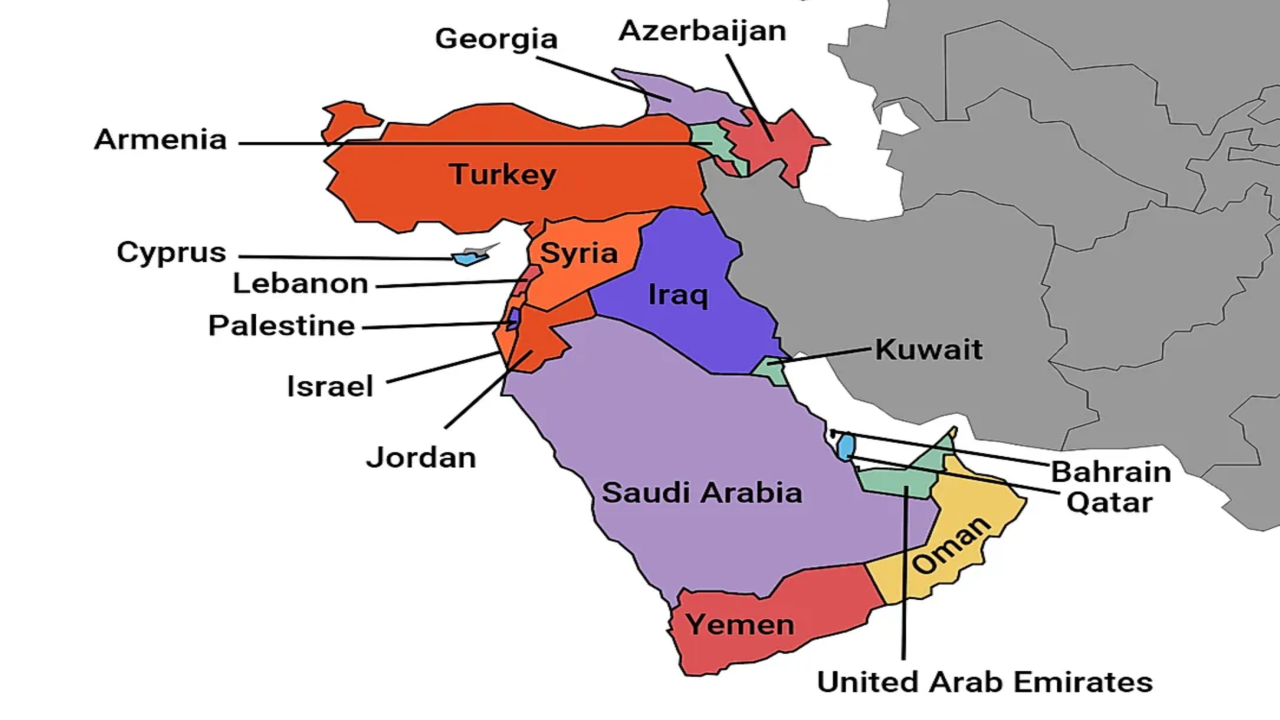Geography of Western Asia
Western Asia, also known as Southwest Asia, is a region that encompasses the southwestern part of the Asian continent. It includes countries such as Armenia, Azerbaijan, Bahrain, Cyprus, Georgia, Iraq, Israel, Jordan, Kuwait, Lebanon, Oman, Palestine, Qatar, Saudi Arabia, Syria, Turkey, United Arab Emirates, and Yemen. Western Asia is located at the crossroads of three continents – Asia, Africa, and Europe, and it serves as a bridge between the East and West.
Physical Geography
- Mountain Ranges: Western Asia is characterized by several mountain ranges, including the Zagros Mountains in Iran, the Taurus Mountains in Turkey, and the Caucasus Mountains that run through Armenia, Azerbaijan, Georgia, and Russia. These mountain ranges create natural barriers that have influenced the region’s history, economics, and culture.
- Deserts: Western Asia is also home to several large deserts, including the Arabian Desert, which covers much of Saudi Arabia, and the Syrian Desert, which covers parts of Syria, Jordan, and Iraq. These deserts are some of the harshest environments in the world, and they are known for their extreme temperatures and limited water resources.
- Rivers: Several important rivers flow through Western Asia, including the Tigris and Euphrates rivers in Iraq, the Jordan River in Jordan, and the Orontes River in Syria. These rivers have been essential for agriculture and irrigation in the region for thousands of years.
Climate
- Desert Climate: The deserts in Western Asia have a hot and dry desert climate with temperatures that can reach up to 50°C (122°F) in the summer and drop to below freezing in the winter. These conditions make it difficult for human habitation, and much of the desert is used for grazing livestock.
- Mediterranean Climate: The coastal areas of Western Asia, such as Lebanon and Israel, have a Mediterranean climate characterized by hot and dry summers and mild and wet winters. This climate is ideal for agriculture, and the region is known for its vineyards and olive groves.
Political Geography
- Nation-States: Western Asia is home to several nation-states, each with its own unique history, culture, and government. Some of these countries, such as Iraq and Iran, are large and influential, while others, such as Lebanon and Jordan, are smaller and more dependent on their neighbors.
- Conflicts: Despite its rich history and cultural heritage, Western Asia has been plagued by conflict and political instability in recent decades. This has been due to a variety of factors, including political rivalries, ethnic and religious tensions, and competition for resources.
Economic Geography
- Oil and Gas: Western Asia is home to some of the world’s largest reserves of oil and natural gas, and the region is a major player in the global energy market. The oil and gas industry is a significant source of revenue for many countries in the region, but it has also been a source of conflict and tension.
- Agriculture: In addition to its oil and gas reserves, Western Asia is also known for its agricultural sector. The region is home to some of the world’s most fertile farmland, and it produces a wide variety of crops, including wheat, barley, cotton, and fruits.
Endnotes
Western Asia is a fascinating region that is rich in history, culture, and natural beauty. Despite its political instability and economic challenges, Western Asia remains an important part of the world, and it is poised to play a significant role in shaping the future of the global community. Whether you’re interested in its physical geography, climate, politics, or economy, Western Asia is a region that is well worth exploring.


